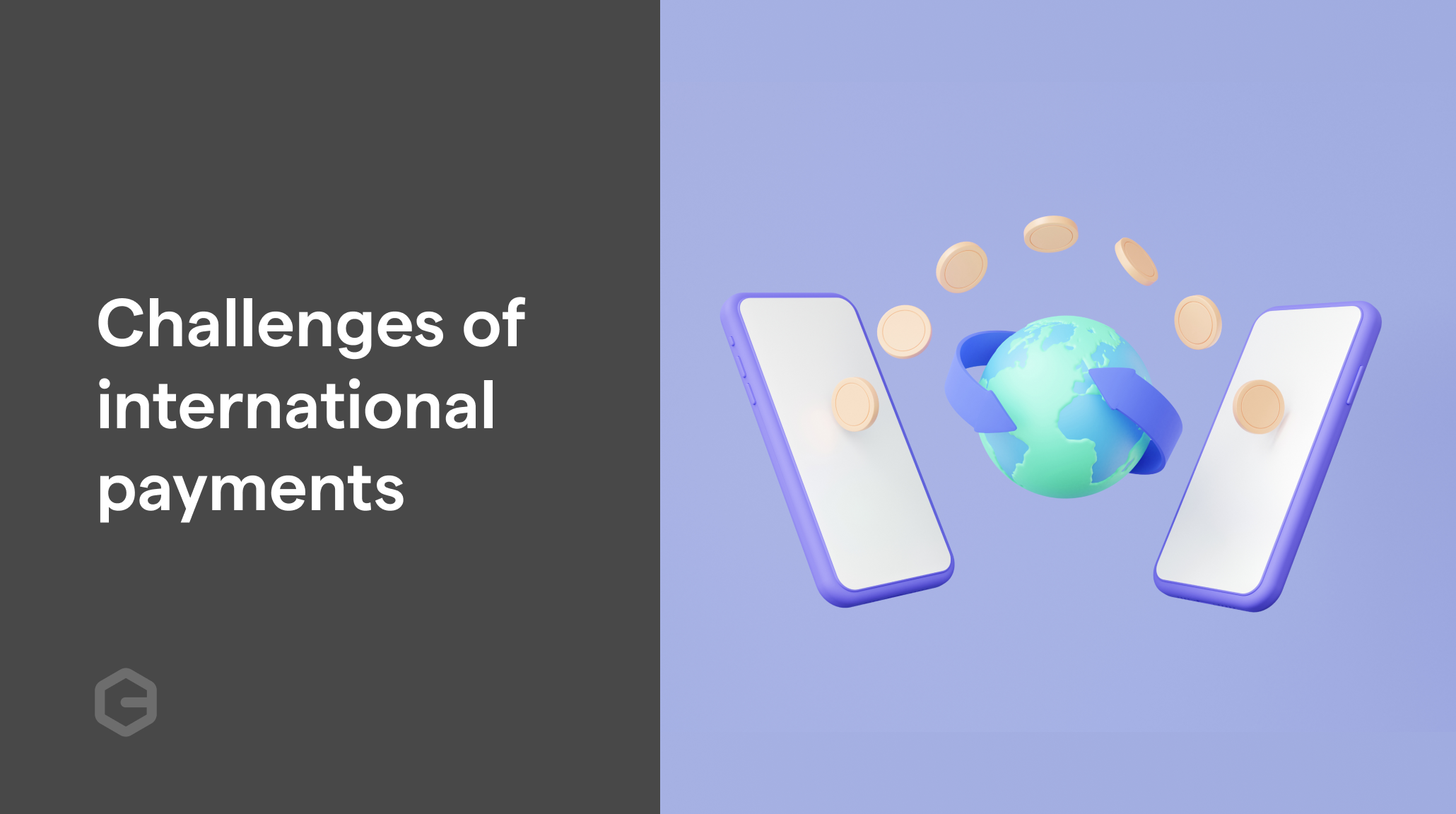Ever wonder what happens after a customer clicks “Pay Now”?
Behind that single tap is a powerful payment service provider (PSP) engine, which quietly moves money, verifies details, and protects your business in real time. It is the invisible force powering digital transactions for exporters, e-commerce brands, freelancers, and SMEs.
Whether selling locally or scaling globally, choosing the right PSP can directly impact your approval rates, customer experience, and bottom line. With the total digital payment transaction value expected to reach US$38.07 trillion by 2030, with a CAGR (2025-2030) of 13.63%, understanding the role of a PSP in banking and how it fits into your payment flow is no longer optional; it’s essential.
This blog will explain how a payment service provider works, the different types, and how using one can benefit your business operations and support global growth. Let’s dive in.
What Are Payment Service Providers?
Payment service providers (PSPs), also called merchant service providers, are third-party organizations that act as mediators between the acquiring bank, card/payment networks, and issuing banks to facilitate electronic payments. PSPs help businesses accept various payments through a single platform, including bank transfers, direct debit, e-wallets, credit and debit card transactions, and real-time bank transfers.
PSPs offer a payment gateway and a merchant account, ensuring that companies may easily and effectively receive and handle their payments. PSPs enable businesses to concentrate on their core competencies by handling the intricacies of accepting payments, even from clients abroad.
Examples: Payglocal, PayPal, Square, Razorpay, PhonePe, Paytm.
How Does a Payment Service Provider Work?
Simply put, payment service providers handle the entire transaction from beginning to end in collaboration with acquiring banks, also known as payment processors. Here’s how the transaction process works.
- 1. Customer Initiates the Payment:
The customer selects a payment method (credit/debit card, UPI, mobile wallet) and enters their payment details via the PSP’s secure and dynamic checkout interface on your website or app.
- 2. Secure Transmission of Data:
According to the PCI DSS compliance terms, the PSP encrypts the payment information and securely transmits it to the payment gateway, preventing the exposure of sensitive card details during the transaction process.
- 3. Transaction Routing to Banks and Card Networks:
The PSP sends the transaction to the acquiring bank (your business’s bank). From there, it is routed to the card network (Visa, Mastercard, etc.), which forwards it to the issuing bank (the customer’s bank).
- 4. Authorization and Fraud Checks:
The issuing bank verifies the card details, checks for sufficient funds, and runs fraud checks. The approval or denial is sent back through the same path: issuing bank → card network → acquiring bank → PSP.
Note: A PSP like PayGlocal may perform additional fraud screening using built-in risk engines to flag suspicious activity before final authorization.
- 5. Authorization Notification:
The PSP shares the authorization result (approved or declined) with the customer and the merchant in real time. Here’s how it usually looks:
For Approved Transactions
Customer View: “Payment Successful! Your order has been placed.”
Or, “Thank you! ₹2,499 has been charged to your card ending with 9876.”Merchant View: Status: Approved, Transaction ID: TXN123456789, Amount: INR 2,499 via Visa, Time: 12:34 PM, 7 May 2025.
For Declined Transactions
Customer View: “Payment Failed. Please check your card details or try another method.”
Or, “Transaction declined due to insufficient funds.”Merchant View: Status: Declined, Reason: Insufficient funds / Card expired, Transaction ID: TXN123456789, Attempted Amount: ₹2,499.
- 6. Fund Capture or Hold:
Depending on how your business is set up, the PSP can either capture the funds immediately or place a temporary hold for future capture (standard in hotel bookings or pre-orders).
- 7. Settlement Process:
Once the transaction is approved and funds are captured, the issuing bank sends the money to the card network. The card network passes it to the acquiring bank, which deposits it into your PSP’s merchant account.
- 8. Refunds or Payment Reversals (if applicable):
In case of payment failures, overcharges, or customer returns, the PSP can process a payment reversal to return funds.
Also Read: Understanding Payment Transaction Processing and Types
Types Of Payment Service Providers
Payment Service Providers come in different models, each handling transactions uniquely. Here's a simple breakdown of the main types of PSPs and how they operate in real-world scenarios.
- 1. Payment Aggregators:
Payment aggregators make it easy for businesses to start accepting digital payments quickly. Instead of giving each business its own merchant account, they group multiple companies under a single master account. This means less paperwork and faster onboarding.
Example: A small e-commerce store signs up with Razorpay and starts accepting card and UPI payments within a day—no complex setup needed.
- 2. Merchant Service Providers:
Merchant Service Providers (MSPs) give each business its own dedicated merchant account. The setup takes longer and involves more checks, but this usually results in lower transaction fees and better control for high-volume businesses.
Example: A large exporter processing ₹10 lakh+ in monthly sales opts for a merchant account with ICICI Merchant Services to get better rates and custom payment features.
- 3. Specialized PSPs:
Some PSPs specialize in specific functions, such as:
- Digital Wallet Integration: Like Paytm or Google Pay, which allow customers to store money, earn rewards, and pay easily.
- Subscription Billing: Platforms like Chargebee, PayGlocal, etc., manage recurring payments automatically.
- Cross-Border Payments: PSPs like PayGlocal and PayPal handle cross-border payments, making it easier for exporters and freelancers to get paid from abroad.
- Industry-Specific PSPs: Some focus on niche sectors like travel or hospitality, offering tailored tools.
Also Read: Understanding International Transaction Fees: How Businesses Can Thrive Globally?
Understanding the types of PSPs is just one part of the picture. Next, let’s explore the key advantages of using a payment service provider for your business.
How a PSP in Banking Can Benefit Your Business Operations?
A Payment Service Provider offers more than just payment processing. It simplifies operations, enhances security, and supports global growth. Here are the key benefits PSPs bring to businesses like exporters, e-commerce platforms, freelancers, and SMEs.
- 1. Accept Multiple Payment Methods:
A PSP enables you to offer various payment options, such as credit/debit cards, UPI, net banking, and e-wallets, through a single platform. Thus, it eliminates the complexity of managing multiple individual integrations.
- 2. Secure and Encrypted Transactions:
PSPs use SSL (Secure Socket Layer) encryption to protect sensitive payment data during transfer, ensuring your business and customers are safe from data breaches. It also improves payment completion rates and reduces abandonment at checkout.
- 3. Fraud Detection and Risk Management:
PSPs verify card details and check account balances before any fund transfer, reducing the chance of chargebacks and fraudulent transactions.
- 4. Support for Multiple Currencies:
With multi-currency capabilities, PSPs allow businesses to accept payments in over 30+ currencies.
- 5. Easy Reconciliation and Monthly Reporting:
The PSP generates detailed transaction reports, including payment methods, amounts, processing fees, chargebacks , and settlement timelines to help with accurate financial record-keeping and reconciliation.
- 6. Add New Payment Options with Ease:
PSPs stay updated with emerging payment methods and help your business support new ones as they go live without significant technical overhead. For instance, many PSPs in India support UPI-based credit card payments and Buy Now, Pay Later (BNPL).
- 7. Faster Setup with Acquiring Banks:
Instead of applying for a merchant account separately, PSPs can onboard businesses faster using their existing tie-ups with acquiring banks.
Also Read: Stay Ahead of Fraud: Understanding Liability Shift in Card Payments
Conclusion
Understanding a PSP in banking and how it works is essential for streamlining digital transactions and scaling your business efficiently. From facilitating smooth fund transfers to offering fraud protection, multi-currency support, and real-time reporting, PSPs simplify the complex web of online payments.
Whether you're exploring aggregator models or dedicated merchant accounts, knowing the types of PSPs available helps you choose the proper support for your operations. Integrating a PSP like PayGlocal into your workflow gives you access to faster onboarding, greater payment flexibility, and robust security within a unified platform.
Are you looking to simplify payments and offer a seamless checkout experience for your cross-border clients? Visit PayGlocal today and discover how a trusted PSP partner can power your global payment operations with confidence and control.
FAQs
- 1. What is the difference between a payment service provider (PSP) and a payment gateway?
A Payment Service Provider (PSP) enables businesses to accept payments by handling the transaction process; routing payments, verifying details, and settling funds into the merchant’s account. In contrast, a payment gateway has a more specific role: it securely captures and transmits customer payment data from the checkout page to the PSP.
- 2. How do you choose a payment service provider?
Choose a PSP that supports multiple payment methods, offers global and multi-currency capabilities, and ensures PCI DSS compliance. Look for transparent pricing, real-time reporting, and easy API integration capabilities. Prioritize PSPs providing added services like receivables management.
- 3. What fees are associated with using a Payment Service Provider (PSP)?
PSPs typically charge setup or integration fees, transaction-based fees, and additional costs for services like fraud protection. Pricing models vary; some offer blended (all-in-one) rates, while others use unblended or unbundled pricing that separates interchange, provider, and card scheme fees. They may offer discounts based on transaction volume.
- 4. What’s the difference between a payer PSP and a payee PSP?
A payer PSP works on the customer’s side, helping initiate the payment and sending funds from their account. A payee PSP supports the merchant by receiving payment details, processing the transaction, and settling the funds into the business’s account.
References
- 1. https://gocardless.com/guides/posts/what-is-payment-service-provider/#what-are-some-examples-of-payment-service-providers
- 2. https://razorpay.com/blog/what-is-a-payment-service-provider/
- 3. https://www.inpay.com/news-and-insights/what-is-a-payment-service-provider-psp/
- 4. https://www.duckcreek.com/blog/what-is-a-psp/
- 5. https://www.zoho.com/books/academy/banking-and-payments/payment-service-providers.html
- What are Payment Service Providers (PSPs)?
- 1. PSPs as third-party entities facilitating electronic payment transactions
- 2. Role in enabling businesses to accept various payment methods
- 3. Connectivity provision between financial institutions
- How Payment Service Providers Work
- 1. Transaction initiation and verification process
- 2. Encryption and data security in transactions
- 3. Fund transfer and transaction completion between customer and merchant
- Types of Payment Service Providers
- 1. Payment Aggregators and Merchant Service Providers (MSPs)
- 2. Difference between PSPs and Payment Gateways
- 3. Role of Digital Wallet Integrators
- Benefits of Using Payment Service Providers
- 1. Multiple payment methods and global currency acceptance
- 2. Security measures and fraud prevention
- 3. Efficiency in transaction reconciliation and reporting
- Services Offered by Payment Service Providers
- 1. High standards of security including PCI DSS compliance
- 2. Currency processing and cross-border payment capabilities
- 3. Monthly or real-time transaction reporting
- Examples of Payment Service Providers
- 1. Notable providers like Adyen, Braintree, PayPal, Stripe
- 2. Domestic examples like Paytm, PhonePe
- 3. Services like comprehensive payment solutions, API integration
- Choosing the Right Payment Service Provider
- 1. Evaluating payment options and global capabilities
- 2. Assessing pricing structure and security compliance
- 3. Understanding technological integration and additional services
- Conclusion
- 1. Importance of PSPs in facilitating secure and efficient transactions
- 2. Enhancement of business growth through diverse payment acceptance
- 3. Implications for global expansion and market adaptation


